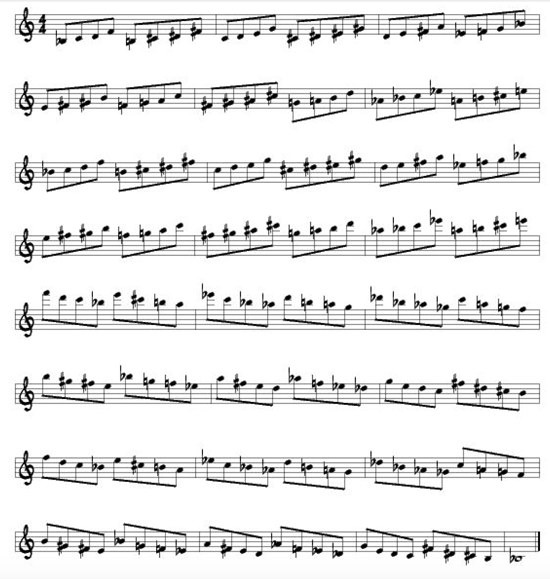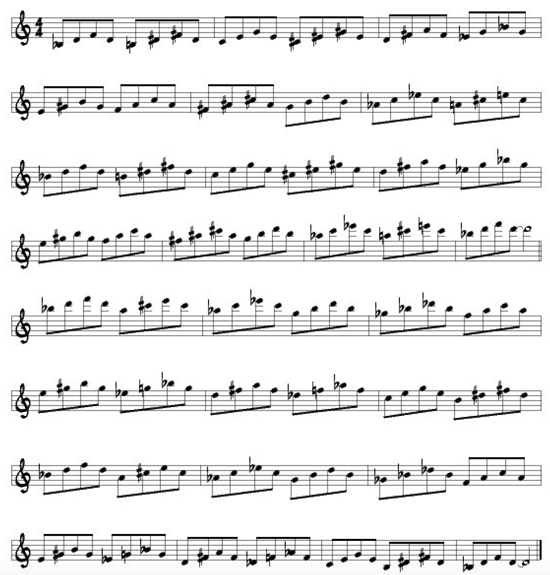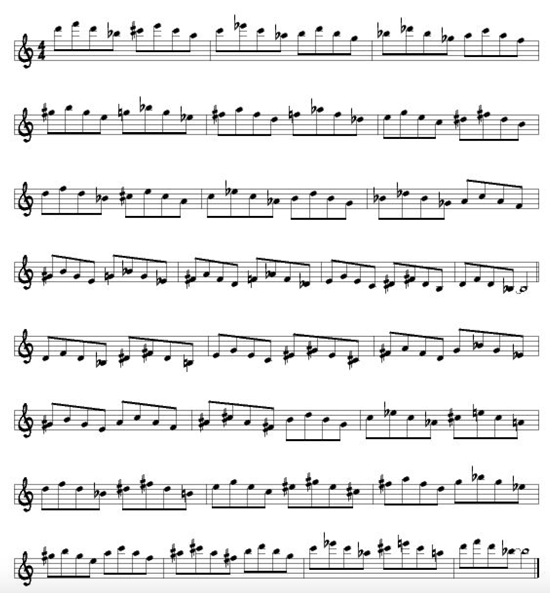Basic Saxophone Warmups and Practice Exercises
 Playing the saxophone requires a lot of practice and repetition if you want to be the best. Warmups are a big part of keeping your muscle memory sharp and increasing your lung capacity so that you can play better, for longer. Doing saxophone warmups and practice exercises before performing also help to focus your mind and get you in the right headspace for playing music.
Playing the saxophone requires a lot of practice and repetition if you want to be the best. Warmups are a big part of keeping your muscle memory sharp and increasing your lung capacity so that you can play better, for longer. Doing saxophone warmups and practice exercises before performing also help to focus your mind and get you in the right headspace for playing music.
Breathing Exercises for Saxophone
Many musicians who play wind instruments like the saxophone do not realize how important breathing correctly is to proper fundamental techniques. Saxophonists need to master airstream focus and breath control to improve quality of tone, pitch, intonation stability, volume, and flexibility. Saxophone players should start every practice session with breathing exercises, much like an athlete stretches before a game.
When you are doing breathing exercises, you should sit upward, maintaining good posture on the edge of a chair. Make sure your feet are flat on the floor and relax your neck, shoulders, and abdomen. Your hands can rest in your lap. You should always be breathing through your mouth, not your nose, try to be conscious of this as you are completing the exercises.
Breathing Exercise for slow tempo:
- Inhale deeply for two full counts so that your lungs are as full of air as possible
- Exhale as a hiss, pushing out with your diaphragm for four counts
- Repeat six times
Breathing Exercise for Medium Tempo:
- Inhale deeply for two full counts so that your lungs are as full of air as possible
- Exhale as a hiss, pushing out with your diaphragm for six counts
- Repeat six times
Breathing Exercise for Expanding Lung Capacity
- Inhale deeply for eight full counts so that your lungs are as full of air as possible
- Hold the breath in your lungs for two counts
- Take a sharp inhale and hold all of the air without exhaling any for one count
- Take a second sharp inhale and hold for one count
- Take a third sharp inhale and hold for one count
- Exhale slowly for eight count
- Repeat three times
When you are practicing breathing techniques, it is essential to keep in mind that pushing yourself to feel dizzy, or sick while breathing is not a good thing. If breathing deeply and filling your lungs causes you pain or makes you lightheaded, discontinue the exercises, and consult with your doctor.
Finger Training Exercises
Finger training exercises are important because they help musicians build their muscle memory and help you to play faster, accurately, and with better technique. Use sheet music to practice finger training exercises but try to memorize the music so that your practicing also works on your brain/hand coordination.
Finger training exercise without the saxophone:
- Put your palms down flat on the table (you can practice with one hand at a time if you need to)
- Lift your fingers one by one
- Next, lift them in pairs 1 & 3, 2 & 4, 1 & 2, 3 & 4, 2 & 3, 1 & 4
- Next, left them in threes, 123, 234, 134, 124
- Repeat this rotation three times
This fingering exercise is a pattern that was used by John Coltrane:

This fingering exercise features easy triads that ascend and descend chromatically but to master this fingering exercise; you need to focus on playing fluidly and evenly. Start slower and work your way to faster tempos.


This saxophone fingering technique features a triad arpeggio and when played at fast tempos can but played in any chord so long as you end on a chord note. This type of fingering exercise can help to create tension in a piece of music.
Exercises for Tone and Sound
Tone refers to the raw tone that is produced when you blow into a saxophone. The tone is measured in frequencies. Sound is the way the tone sounds based on the way that specific saxophone player is playing the instrument. Sounds can change based on vibrato, pitch, articulation, or dynamics. Great saxophone players have great tone and a unique sound, but controlling both tone and sound are key when it comes to practicing. You should also focus on pieces that have long notes to perfect your tone.
Keep in mind that you need a specific type of saxophone and mouthpiece to achieve certain sounds. The alto saxophone and tenor saxophones will sound completely different, even while playing the same piece because the alto sax is an Eb instrument whereas the tenor sax is half an octave lower in Bb. This is why it is also important to make sure your sheet music was written for the specific type of saxophone you are playing.
Most people think about a tenor saxophone’s sound when they think about saxophones because of its long history in jazz music and rock ‘n’ roll. Alto saxophones are usually best for beginners because they are smaller in size with a smaller mouthpiece.
Very experienced saxophonists sometimes go on to learn the soprano saxophone which is also a Bb instrument but is the highest pitch of all types of saxophones. Soprano saxophones will vary in sound and tone depending on if the saxophone is straight or curved.
The largest and lowest pitched saxophone is the baritone saxophone. This large sax is probably the least common but is sometimes highlighted in jazz solos. The baritone saxophone is so large that musicians have to wear a harness while playing. This instrument can also reach the key of Eb when an extension is added.
Basic chromatic scales are great to practice for tone. Beginners should start by mastering and memorizing the Bb scale. If you have time, play the chromatic scale, holding each note for as long as you can without losing breath or losing the quality of tone.
Once you have mastered holding out long tones with proper tone and sound, start practicing your scales using volume dynamics. Start each note quietly and increase the volume, then decrease back to quiet while maintaining the quality of tone. You can also start the note loud, decrease the volume, then increase it again back to loud.
Conclusion
Focusing on your breathing techniques, finger training, and exercises that help you perfect your tone and play your saxophone flawlessly will help you to develop a sound that is unique to you as a saxophonist. Developing your own personal sound will help you to stand out in the jazz scene and make a name for yourself.






October 7, 2019 @ 12:21 am
Thank you very much sir. I’ve really learned and gained alot. God bless you sir.
October 16, 2019 @ 5:54 pm
Help on the Saxophone
The Difference Between Classical And Jazz Saxophone Embouchures – ScionAv
November 15, 2022 @ 10:32 pm
[…] and tongue position, even if you are just starting out as a saxophonist. G. Schirmer’s 158 Saxophone Exercises is a great resource for practicing […]